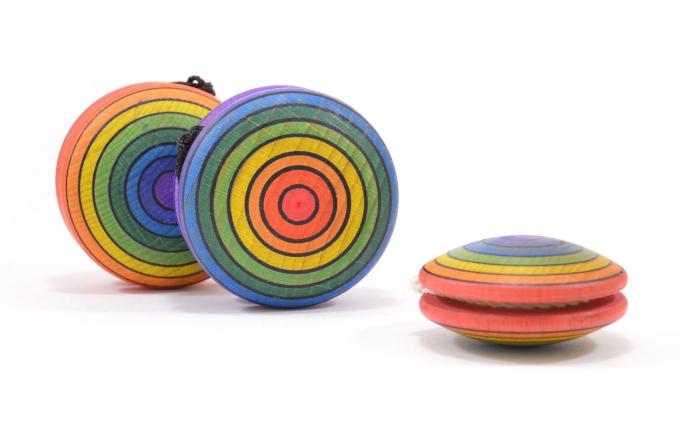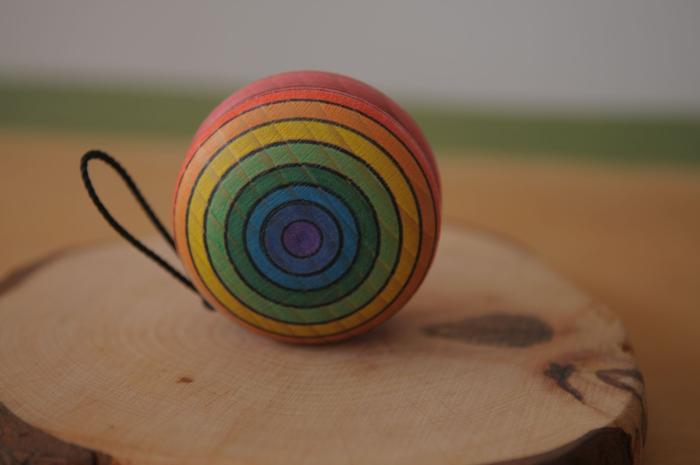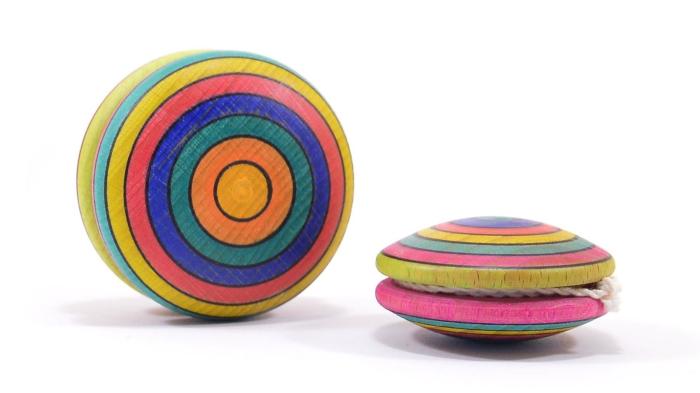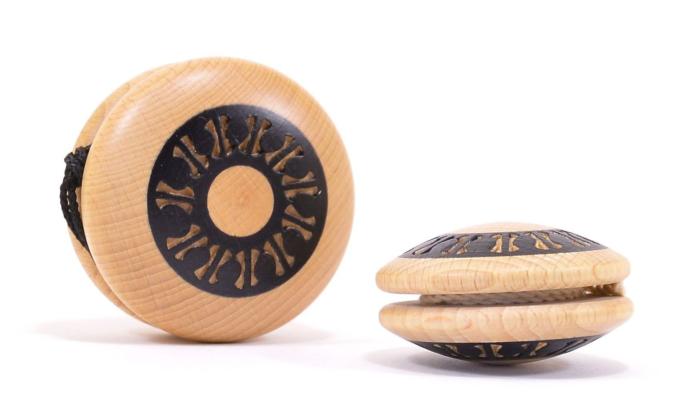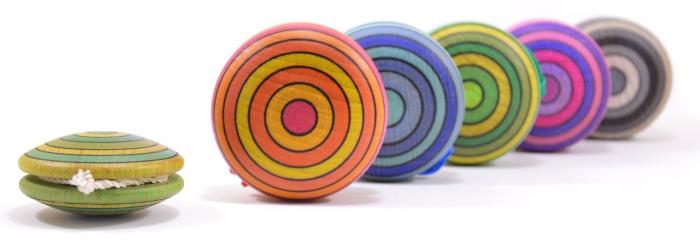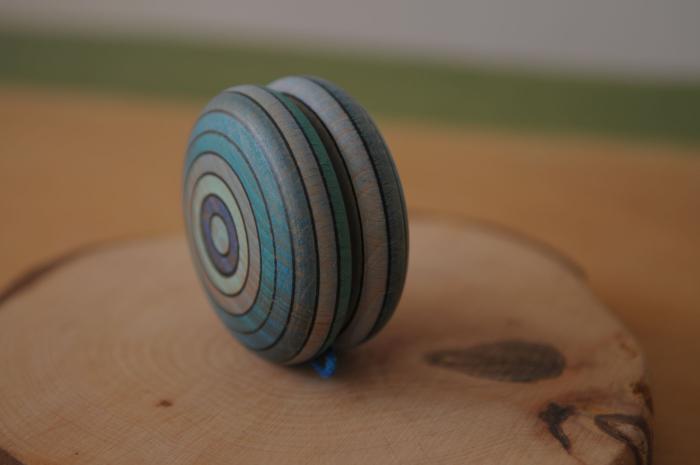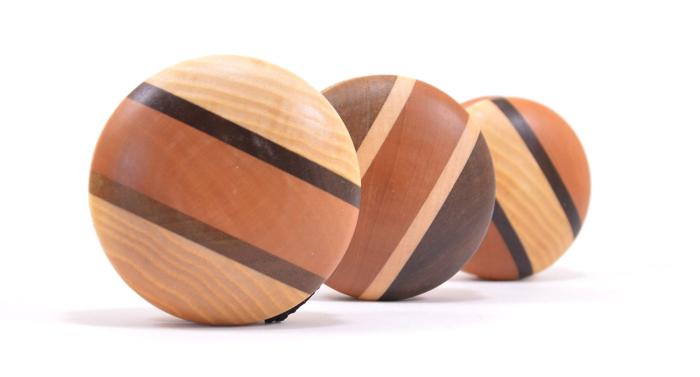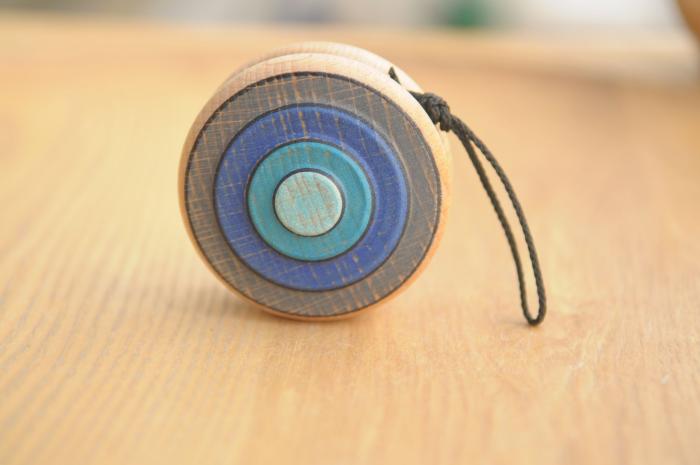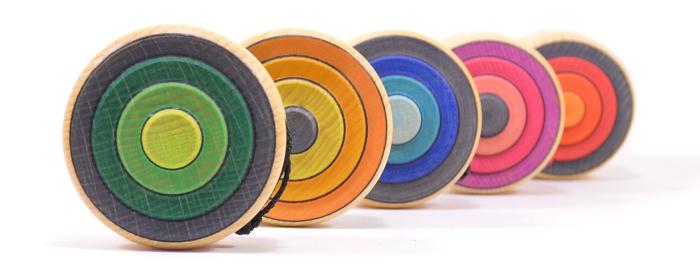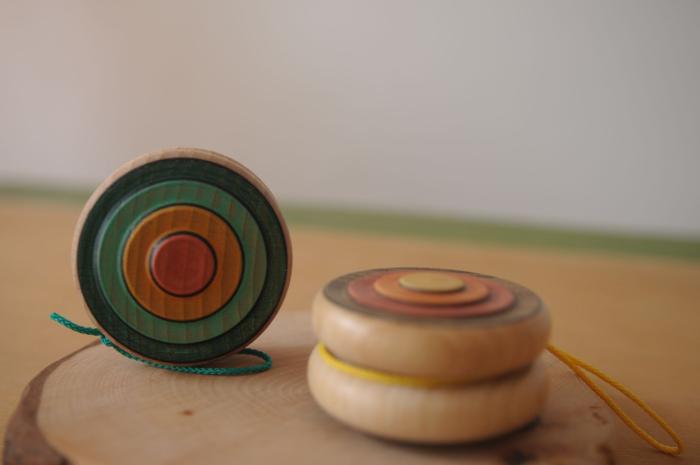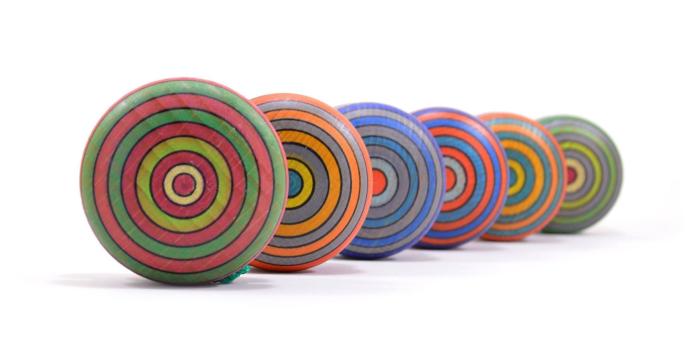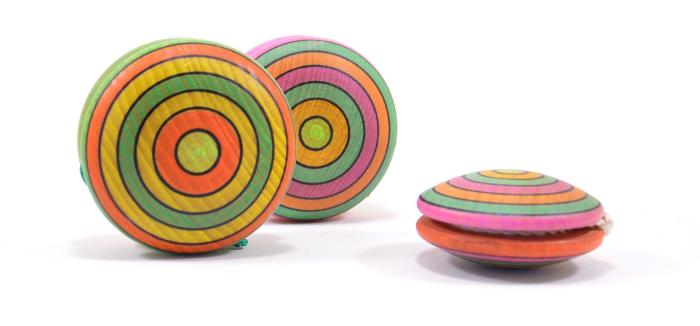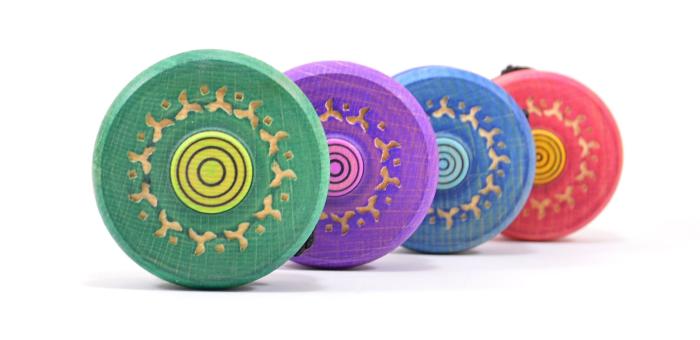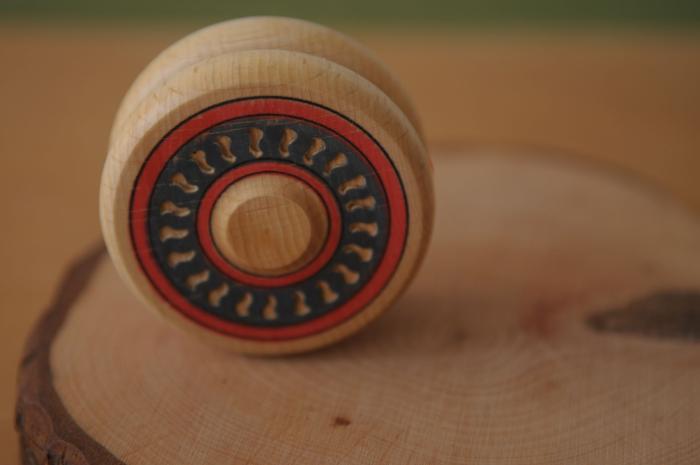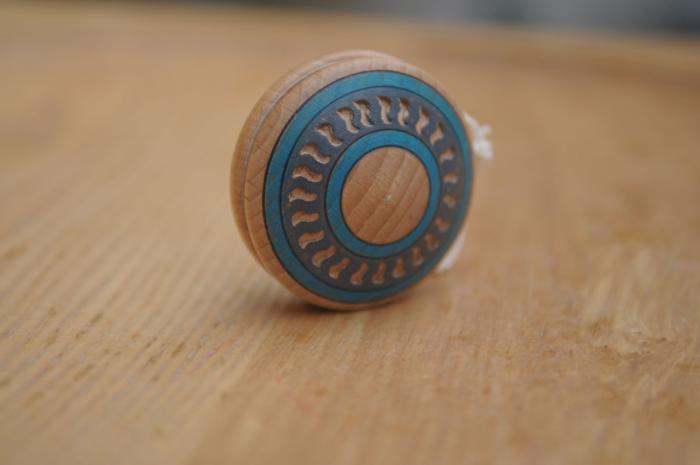Handmade wooden yoyo's

It is believed that the yoyo probably originated in China. The first historical reference of the yoyo however, was from Greece in the year 500 BC. These ancient toys were made of wood, metal or painted terra cotta discs. It was customary, when a child reached a certain age, to offer toys of his generation to certain gods. Due to the fragile nature of the material, it is thought that the terracotta (clay) discs were used for this purpose rather than actual play. A vase painting from this time period shows a Greek youth playing with a yoyo . Such vases, as well as an actual terracotta disc, are in the National Museum of Athens. The value of the yoyo as a stress reliever is also seen in the story. While it is a fashionable game for the French nobility, those less fortunate are said to have played it with their émigréttes to ease the understandable tension of their one-way journey to the guillotine. Dating back to 1780, there are drawings of General Lafayette and others with their troops throwing their yo-yo's .
The yoyo arrived in Paris in 1791 and spread throughout France under the name "joujou de Normandie". Some believe this term may reflect possible roots for the modern American name yo-yo. High interest in the game was demonstrated by the famous French playwright, Beaumarchais, in his treatment of The Marriage of Figaro in 1792. There is a scene where the nervous Figaro enters and conveys his tension, not by the conventional wringing of hands of, but playing with his emigrette! When asked what the amygdala was for, Figaro replied, "It is a noble game, which dispels the fatigue of thought." Even on June 18, 1815, at the famous Battle of Waterloo, Napoleon and his army were playing to relax with yoyo's , before the battle.
ΛΕΥΚΟ_ΦΟΝΤΟ-2.jpg)
